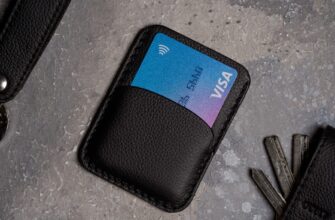## Introduction
Bitcoin represents digital freedom, but securing it demands more than just an exchange account. With rising cyber threats, learning how to buy Bitcoin and store offline (cold storage) is crucial for protecting your investment. This guide covers every step—from purchasing your first satoshis to implementing military-grade offline storage solutions—ensuring you retain full control of your crypto assets.
## Step-by-Step: Buying Your First Bitcoin
Follow these steps to securely acquire Bitcoin:
1. **Select a Reputable Exchange**: Choose platforms like Coinbase, Kraken, or Binance for user-friendly interfaces and strong security.
2. **Complete Verification**: Submit ID documents for KYC compliance to unlock higher purchase limits.
3. **Fund Your Account**: Deposit fiat currency via bank transfer, debit card, or PayPal.
4. **Execute Your Purchase**: Buy Bitcoin at market price or set limit orders for better rates.
5. **Withdraw Immediately**: Never leave coins on exchanges—transfer to your personal wallet right after purchase.
## Why Offline Storage is Non-Negotiable
Online wallets and exchanges are vulnerable to:
– Hacking attacks
– Exchange insolvencies
– Phishing scams
Offline storage isolates your private keys from internet-connected devices, making them immune to remote attacks. This is the gold standard for long-term Bitcoin security.
## Top Offline Storage Methods Compared
### Hardware Wallets
Dedicated devices like Ledger Nano X or Trezor Model T:
– **Pros**: PIN protection, encrypted chips, easy recovery phrases
– **Cons**: Cost ($50-$200)
### Paper Wallets
Printed QR codes containing keys:
– **Pros**: Free, completely offline
– **Cons**: Physical damage risk, complex for beginners
### Metal Seed Plates
Titanium plates engraved with recovery phrases:
– **Pros**: Fire/waterproof, lasts centuries
– **Cons**: Higher cost, setup complexity
## Creating a Bulletproof Hardware Wallet Setup
### Step 1: Purchase Directly
Buy only from manufacturer websites to avoid tampered devices.
### Step 2: Initialize Securely
– Set unique 8-digit PIN
– Generate 24-word recovery phrase
– **Critical**: Write phrase on paper—never digitally
### Step 3: Verify Receive Address
Confirm wallet address matches device display before sending funds.
### Step 4: Transfer Bitcoin
Send small test amount first, then move full balance.
## Building a Fail-Safe Paper Wallet
1. Use trusted open-source tools like BitAddress.org
2. **Disconnect internet** before generating keys
3. Print keys on laser printers (no cloud-connected devices)
4. Laminate or store in sealed bags
5. Keep in fireproof safe with multiple copies in separate locations
## 5 Non-Negotiable Security Rules
1. **Never digitize recovery phrases**: No photos, cloud notes, or texts
2. **Test recovery**: Verify you can restore wallets before storing large amounts
3. **Use multi-location storage**: Split backup copies across home/safety deposit box
4. **Update firmware**: Patch hardware wallets quarterly
5. **Silence is golden**: Never disclose holdings or storage methods
## Frequently Asked Questions
### Is offline storage really necessary for small amounts?
Yes. Even $100 in Bitcoin can be targeted. Cold storage eliminates exchange risk regardless of portfolio size.
### Can I recover Bitcoin if my hardware wallet breaks?
Absolutely. Your 24-word recovery phrase restores access on any compatible wallet—the device itself is replaceable.
### Are paper wallets still safe in 2023?
When created correctly offline, yes. However, hardware wallets offer better usability and physical durability for most users.
### How often should I check offline-stored Bitcoin?
Check balances quarterly via blockchain explorers (e.g., Blockchair) using your public address—no need to access private keys.
### What’s the biggest cold storage mistake to avoid?
Storing recovery phrases and hardware wallets together. A fire/theft could destroy both. Always separate geographically.
## Final Thoughts
Mastering how to buy Bitcoin and store offline transforms you from passive investor to sovereign custodian. By implementing hardware wallets or properly crafted paper solutions, you create an impenetrable vault for your digital wealth. Start small, practice security rituals, and remember: In crypto, your keys are your kingdom.








